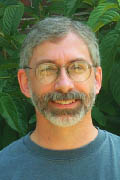2007–2008 Speakers
 |
Barry Connors
L. Herbert Ballou University Professor |
|
The neocortex is the largest and most unique part of the mammalian brain. It generates neural events that are essential for normal perception, motor control, memory, and cognition. To help understand the mechanisms of the neocortex, my students and I study the basic physiology of its neurons, synapses and neurotransmitters, and the patterns of its connections. We discovered that inhibitory neurons in the cortex communicate via electrical synapses, and that electrically coupled networks of neurons can serve as pacemakers for cortical rhythms in the brain. We are also studying how neural activity leads to plasticity of cortical circuits, and how the seizure discharges of epilepsy begin and propagate through the cortex. Our methods include intracellular and extracellular recording and patch clamping, neuroanatomical techniques, isolated slice preparations, and computer modeling. |
|
 |
Julie PhillippiResearch Assistant ProfessorDepartment of Surgery Cardiac Surgery Division University of Pittsburgh Medical School Website at the University of Pittsburgh |
|
Bicuspid aortic valve (BAV) is the most common cardiac malformation and occurs in 1-2% of the population. Patients with BAV are at increased risk for thoracic aortic aneurysm formation and surgical intervention is often warranted. Approximately 43% of patients undergoing reconstruction or replacement of the ascending aorta have BAV. Our overall goal is to understand why patients with BAV are predisposed for aneurysm of the ascending aorta. A genetic cause for BAV has not yet been identified. Although extracellular matrix (ECM) degradation via overproduction of matrix metalloproteinases (MMPs) has been linked to aneurysm formation, the causes of BAV and its relationship to aneurysms remain elusive. Our group has recently shown that levels of metallothionein (MT) are decreased in BAV patients with aneurysm relative to non-aneurysmal patients. MT is an important metal-induced protein that regulates cellular response to oxidative stress as well as MMP expression. We hypothesize that poor response to oxidative stress by aortic smooth muscle cells of BAV patients contributes to improper ECM deposition, organization and remodeling and weakened aortic integrity, thus resulting in aneurysm formation. Our work is focused on elucidating the putative connections between MT, oxidative stress and growth factor responses related to the ECM at the cellular and molecular level. Improved understanding of ECM-cell communication within the aorta could lead to potential treatment options for patients with BAV to restore balance of ECM remodeling to the aortic microenvironment and prevent aneurysm formation. |
|